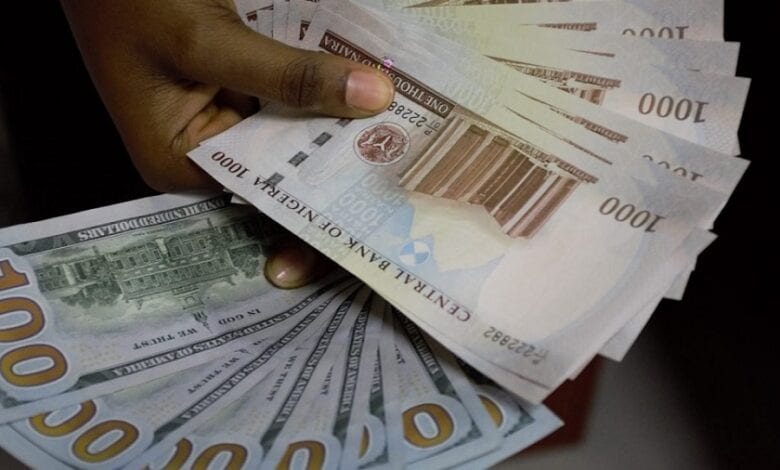Since the introduction of the Central bank of Nigeria’s (CBN) “Naira4Dollar Scheme” in March 2021, the Naira rate has fallen by a whopping N127.
The CBN launched the “Naira 4 Dollar Scheme” on March 8, 2021, to incentivize the inflow of remittances from the diaspora into the country, in response to the inadequate forex supply and ongoing pressure on the country’s exchange rate.
Specifically, the parallel market rate of N612/$1 as of Monday, 4th of July, 2022, compares to N485/$1 prior to the launch of the “Naira4Dollar Scheme”.
This reflects a N127 reduction or 26% depreciation to the value of the Naira on the parallel market since the scheme was implemented.
The key requirement for this Naira4Dollar program to function was that remittances from the diaspora had to be sent via an authorized international money transfer operator (IMTO).
READ ALSO: Naira falls heavily as exporters continue to battle forex shortages
From the Central Bank of Nigeria’s perspective, the Naira4Dollar initiative has successfully provided an opportunity to encourage alternative FX inflows from non-oil sources.
However, from the perspective of an average Nigerian, it may be unclear how to acknowledge that this initiative has been successful. This is because the challenges of accessing foreign exchange persist.
Specifically, anecdotal data suggests that businesses continue to experience latency in getting backlogs of FX orders fulfilled. These anecdotal experiences can arguably be evidenced by notifications from key operators such as
In February 2022, Nigerian Banks sent out a plethora of communication advising customers of reduced dollar limits on debit cards
In May 2022, IATA published information suggesting that Nigeria was owing airline operators a backlog of over $450 million.
When the Naira4Dollar scheme was introduced in March 2021, the CBN had suggested that a huge portion of the diaspora remittances would be incentivized to use the Naira4Dollar initiative rather than going through non-official channels.
READ ALSO: Naira drops to new all-time low at parallel market
In other words, the target was to centralize the diaspora remittances of over $20 billion annually. Thus, centralized FX inflows would in-turn, favourably impact the value of the Naira and slow down its depreciation.
Specifically, between March-2021 and May 2021, the spread between the official exchange rate and the parallel market rates oscillated in a narrow range below N75.
However, since September 2021, the difference between the official rates and the parallel rates has simply exploded.
Firstly, observers of economic activity will recall that Nigeria eased a significant portion of its restrictions in the second quarter of 2021, as vaccines began to arrive in the country. Consequently, by the third quarter of 2021, demand for domestic and international travel had begun to rebound.
The impact of increased economic activity simply meant that by the third quarter of 2021, business demand for FX had simply bounced back, thus the relative stability in parallel market spread achieved by the Naira4Dollar scheme earlier in the year was simply not sustainable.

 Latest5 days ago
Latest5 days ago
 Latest3 days ago
Latest3 days ago
 News2 days ago
News2 days ago
 Energy6 days ago
Energy6 days ago
 Latest3 days ago
Latest3 days ago
 Comments and Issues5 days ago
Comments and Issues5 days ago
 Business6 days ago
Business6 days ago
 Business6 days ago
Business6 days ago

